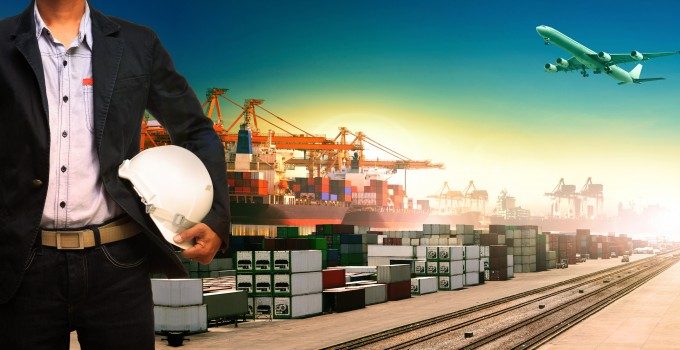DP World aims for 30% in cut ULCV handling times with new terminal concept
Port operator DP World is set to develop an innovative new container storage system at ...

Delegates attending the TOC Container Supply Chain event in London yesterday were warned that container terminals needed to “lift their game” to cope with the latest ultra-large 16,000-18,000 teu containerships being deployed on the Asia-Europe tradelane.
Speaking at the Shipping Watch seminar, Andrew Penfold, of Ocean Shipping Consultants, said pressure on terminals would increase and that any negatives could lead to some ports being dropped and cargo transhipped.
Moreover, Mr Penfold said it was “no technical jump” to building ships of up ...
MSC Elsa 3 sinking – now the 'blame game' begins
After DSV 'cuts the cake' on Schenker acquisition, time for redundancies?
Congestion fear as US west coast ports brace for transpacific cargo surge
Bad news for shippers as wave of transpacific rate increases continues
Houthis claim Red Sea safe for box ships not calling at port of Haifa
Shippers hold their breath as Trump appeals court ruling that tariffs are illegal
No deals with carriers, say Houthis – Red Sea safe for non Israel-affiliated ships
Schenker's Shirley Sharma Paterson moves to K+N as global head of sales

Comment on this article
Ricky Forman
June 25, 2014 at 3:50 pmCarriers continue to focus on costs rather than income, it could be argued they only have themselves to blame as risk management tools are available to carriers to hedge their spot exposure and therefore mitigate this risk. Its time they stopped playing the same record over and over again expecting to hear a different song!
Andy Lane
July 09, 2014 at 3:43 amNo doubt 24,000 TEU vessels (or larger) will come, but it is extremely doubtful that they will be ordered within a couple of years (from now), regardless of whether they can be physically built or not. To gain any significant cost advantage (and agree that it is now a low-cost game), such vessels would need to be 85%+ utilised year round, else they do not offer any true cost advantage, and merely become liabilities, as well as further tilting the supply/demand (im)balance.
One of the benefits of P3, was the ability for the partners to reach higher utilisation levels on the present largest container vessels. I would doubt whether any other alliance has the scale or market share to match that (for 18,000 TEU ships), let alone anything larger. Historically (through-out periods of 10%+ year-on-year demand growth), the cycle of large step-ups in vessel size has been every 6-7 years, so we might then be looking at 2020.
So long as excess capacity exists in an over-fragmented industry, then “controlling” revenues is very difficult to achieve, not to say that it should be completely ignored either. It is far easier to reduce costs, over which a liner has far more control. Continuing to simply build more large vessels cannot be the short/medium term solution in the low-cost game. Most liners will be able to reduce costs by further focusing on their networks and asset deployment, through further optimising these, which is precisely what the profit-leaders have done and are doing.
No doubt that Terminals need to improve their service offerings, it is however premature to scale up facilities for larger vessels right now! The Terminal’s focus needs to be on the speed of vessel turn-around, to facilitate lowest cost networks for the Customers.
Charles de Trenck
July 10, 2014 at 2:48 amThe ships will come not only because or when they are needed in market demand terms, which on that basis might be a good while longer, but also on the back of financing structures available. So, for instance, if we go into a tight finance environment for a few years and asset finance is tight then little will get done on new vessel types. But, if, say, China decides to get back to near-zero financing as it did a couple of years ago, then when it does it could want to experiment with new vessel types based on proposals showing low-cost financing on something with the best economies of scale makes sense. Of course, this would be pushing it. But something along these lines in 5-10 years is certainly very possible. The logic is … the only way out is up. Whether it is global debt or bigger ships. And just like older debt will have to be written off, some ship types that could have lasted longer will have to go as well. Currently we can watch what happens with the 19,000teu vessels.